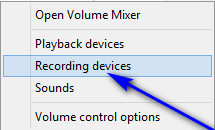How to Turn Up Mic Volume in Windows?
Not every microphone has the same base volume for transmitting your voice through your computer to whoever or whatever is on the other end of the exchange. Some microphones have a higher volume as compared to others, and some microphones have a volume that is so low that the person on the other end of the communication can’t hear you correctly and/or can’t make out what you’re saying. In cases where the volume of your microphone is too low, the only solution is to turn up the microphone’s volume.
Turning up the volume of the microphone attached to a computer is an option that is present in all versions of the Windows Operating System, and that includes Windows 10 – the latest and greatest in the long line of Windows Operating Systems. However, since microphone volume is not an option that is readily available at the forefront of Windows 10 and instead needs to be dug up from underneath a bunch of menus and settings, most users don’t know exactly how they can turn up the volume of their microphone. In actuality, turning up microphone volume on Windows 10 is pretty easy – here’s all you need to do if you would like to increase the volume of your microphone on Windows 10:
- Locate and right-click on the Sound icon in the taskbar (represented by a speaker icon). Click on the Recording devices tab when the window opens.

Opening Sounds – Windows - Right-click on Sounds icon on your Desktop and select Recording devices (for older versions of Windows).

Recording Devices (for an older version of Windows) - Locate and right-click on your computer’s active microphone. Depending on your setup, there may be more than one microphone present in the Recording tab of the Sound window, but your computer’s active microphone will have a green checkmark next to it.

Selecting Default Microphone - Click on Properties in the resulting context menu.

Properties of Microphone - Navigate to the Levels tab.
- First and foremost, turn the slider under the Microphone section all the way up to make sure that the microphone’s volume is set to 100, no less.
- If increasing the microphone’s volume to 100 isn’t enough to get the job done or if the microphone’s volume was already set to 100, you can ahead and add some Microphone Boost to the mix as well. The Microphone Boost feature can give a boost of up to 30.0 dB to the volume of your microphone – all you need to do in order to use this feature is select just how much of a boost you want your microphone’s volume to get using the slider under the Microphone Boost option. When tinkering around with the Microphone Boost feature, is it best to be in communication with another person via the same microphone you are applying the Microphone Boost to so that you can ask the other person for feedback pertaining to the mic’s volume at the same time you adjust it.

- Once done, click on Apply and then on OK.
- Click on Apply and then on OK in the Sound window to close that as well.
The changes you have made to your microphone’s volume will be applied and saved as soon as you click on Apply, so you can test your microphone’s volume out as soon as you are done turning it up.